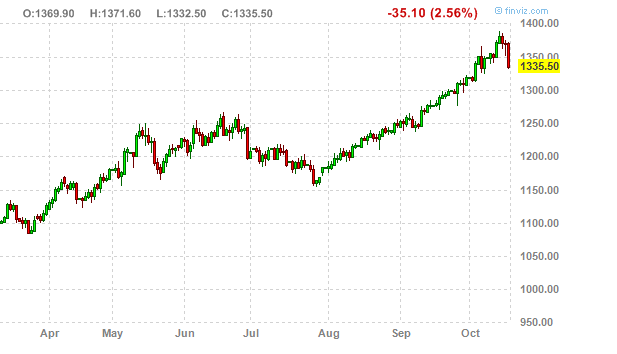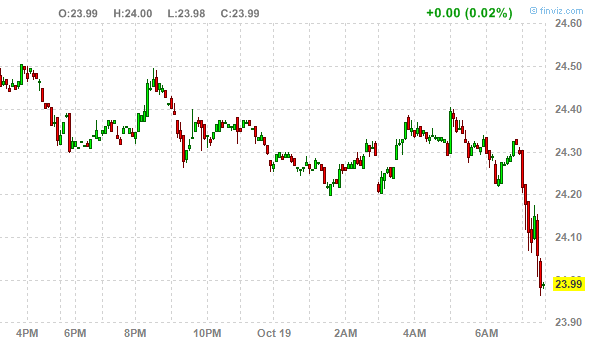Wow it’s been an exciting time in the markets overnight! The big news today is that the People’s Bank of China announced a surprise .25 rate hike. This sent the US dollar surging and gold plunging. The .25 rate hike is in many ways not that much, however it’s signaling the start of further and more aggressive tightening cycle.
The implications are a stronger USD, weaker commodity prices (gold and silver) and lower equities (stocks, shares, etc). There’s also the possibility that gold drops some more and then bonces back to previous levels – however calling moves like this are akin to gambling – risky and very hard to call correctly.
At Gold Smart we’ve been saying to our customers for sometime that gold has been due for a pull-back so congratulations to those that took action and benefited from their good timing!
Gold prices are still very good from a historical perspective, so if you are considering selling gold – give the friendly team at Gold Smart a call to discuss now – 0800 465 376
As Gold Buyers we will be doing our best to hold our high rates, however if there’s further movement on the downside, we won’t be able to hold them for long!

The Gold Smart® Scales, Gold Buyers in NZ (the best gold buying prices Guaranteed*)
Selling your old gold jewellery may be easier than you think. Most pawn dealers make people feel uncomfortable and jewellery shops refuse to buy such items because they are difficult to sell to their customers. So what is the process if you want to sell gold in New Zealand? What are your options?
The first option would be to use a site like TradeMe – however do you want a stranger coming to your home to collect your valuable jewellery? Also you are competing against a large volume of gold and silver jewellery items, some with very low reserve prices.
The second option would be to give your jewellery away to your daughter, niece, etc – however customers often say to us that their kids/family don’t want their old jewellery so there can be a surprising lack of sentimentality. As a suggestion, if you sell to Gold Smart you could use the money as the gift to family or a worthy cause – I’m sure they will take cash!
Another option would be to offer your gold jewellery to your friends – however it may be difficult for you to ascertain the correct value and sometimes people don’t feel comfortable wearing second-hand jewellery.
An undesirable option would be to take your items to a “pawn shop” or similar store that will undoubtedly try a “low-ball” offer as they like to take advantage of “uneducated sellers”.
The last and best option is to call 0800-GOLD Smart and talk with one of our friendly Gold Buyers. We weight your gold using precise scales, test the items and calculate a gold value for you. It’s as simple as that!
Gold Smart is changing the way KIWIS sell gold – customers call us their favorite Gold Buyers!
 During times of financial troubles and hardship, one has to swallow his pride in order to take action against a rising tide of debt. Critical cases need urgent action. Most people in this category will be prepared to take action because there’s always a way to improve your situation.
During times of financial troubles and hardship, one has to swallow his pride in order to take action against a rising tide of debt. Critical cases need urgent action. Most people in this category will be prepared to take action because there’s always a way to improve your situation.
The first place to start is by looking at how to reduce expenses and overheads. These could be simple luxuries that eat away at cash you could be using to reduce debt and pay bills. The next area to consider is how to bring in more income to ease any burden – if you have gold jewellery, then you are fortunate to have a way to get instant cash from gold buyers like Gold Smart.
The question can become, “I have gold jewellery, but don’t know who to sell gold to.”
If this is something you’ve considered, then feel at ease that your concerns are shared by many people who have been in the same situation feeling the same emotions. You need to feel comfortable with the people you sell gold to – most people wouldn’t feel comfortable selling to a dogdy pawn shop, selling to teenagers, in public and in-front of strangers or via a mail-in service where you can’t meet the people behind the business.
Your gold jewellery could contain hidden riches that will give you a large cash boost for paying bills, taking a holiday, going shopping or simply treating yourself. There’s a lot of hype out there and being a discerning seller doing your research will pay dividends!
“How do I know if I have chosen a reputable company?”
You can check this rather easily – firstly visit the company of gold buyers, do they seem professional and proficient, are they knowledgeable about gold and jewellery, are they focused on providing answers to your questions and excellent customer service? Do they have extensive and credible customer testimonials, are they transparent with their processes and most of all – does it feel right? Intuition is a wonderful thing that when listened to will often prove to be correct.
Don’t be pressured into selling anything, or be afraid that prices will move against you.
It’s also important to get an idea of how gold buyers are going to price your gold. Your gold jewellery valuables will be bought based on gold-content, however rates between companies can vary significantly – do they give you a PER GRAM RATE? At Gold Smart we provide rates so you can easily compare us against anyone else – you’ll be surprised what difference a few dollars in the per gram rate of gold prices will mean for your pocket!
Gold Smart is a pioneer is making gold selling a professional, friendly and pleasurable experience. We buy all kinds of gold from all ranges of customers – there’s nothing too big or too small for us to look at.
Gold Smart provides FREE APPRAISALS and a PRICE GUARANTEE*.
Check out our website now and call one of our friendly team to book your Gold Selling appointment!
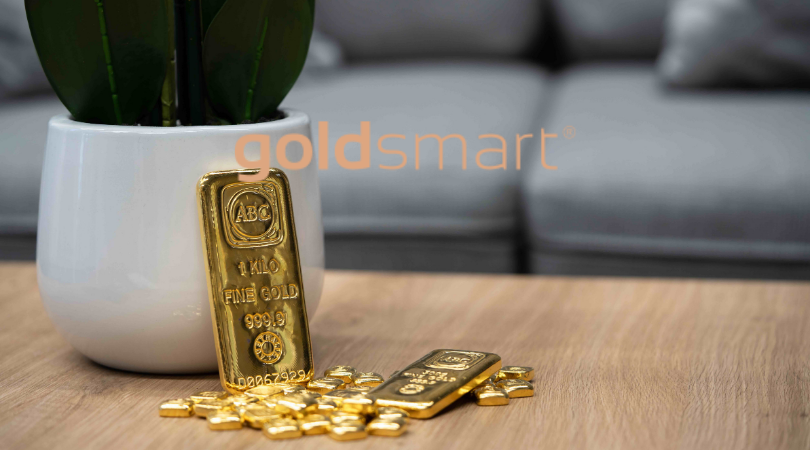
How important is customer satisfaction with selling gold in New Zealand? Think about it from this perspective: if a business spends gets 80 percent of its revenue from 20 percent of the people who walk in the door or express interest, it would make sense to focus most of the attention of the sales on that 20 percent, right? Well, that’s how powerful customer loyalty and retention can be. That 20 percent is more often than not return customers who keep coming back to the business versus one-time customers or parties who drop in once but are never seen again. Yet everyday business tries to spread their nets wide hoping that they will grow in profits and success by simply getting as many people through the front door as possible. Mathematically, it makes no sense, but this is the common attitude of most big businesses because the lure of lots of traffic is assumed to turn into sales. Welcome to the retail business.
Why How a Business Treats its Customers Matters to Gold
From a personal gold selling perspective, most gold buyers want a significant amount of traffic entering the front door. The more gold that arrives, the better off they are in terms of increasing intake and then turning around and selling it for a bulk recycle price. However, these buyers generally want to make sure they are making a profit. They can’t raise the price they sell the gold for; that’s controlled by the consolidators they work with and sell the bulk gold to. However, they can control how much they buy gold from personal sellers, so the logic tends to follow that they don’t pay any more than they have to, often trying to get lower costs by pressuring personal sellers to sell for less than their gold is worth. And that, in turn, produces poor customer service for people trying to sell personal gold for a respectable recycling price. No surprise, many people who experienced this kind of gold buying end up never going back, and that causes the cycle to repeat itself. The more people these kinds of businesses treat badly, the more they need have come through the door to replace those who will never sell gold to the business again. It’s a self-defeating business strategy, but they always seem to be more folks desperate to sell gold and not willing to look for a better option. So, the business doesn’t change.
On the other hand, gold buyers who focus on building a relationship with their customers end up not only achieving gold purchases with the first transactions, they also continue to receive more gold again and again as the relationship continues and the customers return. This retention produces long-term revenue streams for the business and helps it continue. As the customers enjoy their transactions and receive fair pricing, they tell others which brings additional new customers to the gold buyer through referrals. Those, in turn, become long-term relationships and the cycle continues. From a business strategy perspective this approach brings in considerably more revenue and operational success, but for some reason, it’s not well-practiced. This in turn creates the reputation that poor gold buyers tend to continue among the public, making it even harder for good gold buyers to reach their customers.
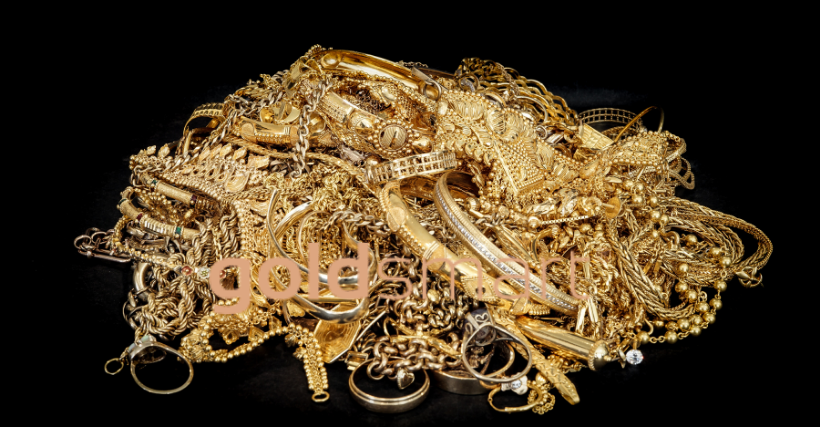
The Proof is in the Pudding
Here’s an example of how much an impact a single customer experience can have when it’s handled with the customer in mind versus just making another sale as quickly as possible:
“It was an absolute pleasure doing business with Gold Smart. They are highly professional and the nicest people too. Felt extremely comfortable dealing with them and the way they communicated with me. I went to a well known jeweller on Broadway before I went to Gold Smart and was most disappointed with their attitude, service and especially the price they offered me. Don’t go anywhere else if you are thinking of selling your gold. They will give you the best price and you will be amazed at what your old gold is worth.”
– Debby, Auckland.
Selling gold in New Zealand doesn’t need to be a cringe-inducing experience. While it is true that a number of gold buyers in the country probably shouldn’t even be in business, there are better choices available and easily accessible to you. Even right now with things being a bit restricted in terms of in-person interaction, online gold selling is quite possible in New Zealand, safe and secure. So there’s no reason to settle for the poor service at the gold buyer store on the wrong side of town or taking huge risks with online auctions or similar. Instead, they’re a better alternative to get the kind of customer service commented on above.
The Gold Smart Choice
At Gold Smart, we make it a top priority to take care of our customers whether they visit in person or online. Every contact and every question is treated sincerely and answered honestly. We’re not interested in a high pressure sale or getting people to hand over their gold at the lowest price possible. Instead, we want our gold-selling customers to have a solid, comfortable experience so they come back again the next time they have gold to sell. This focus on customer retention happens by answering every question, educating customers on every piece they have, being respectful of personal interests if someone makes a last-minute decision not to sell, and providing the best objective pricing for recycled gold. Those aspects are hard to find separately with a lot of other gold buyers and almost impossible to find together in one place. It’s also the reason why Gold Smart remains one of the best gold buyers for consumers in New Zealand year after year. So, when it’s time to sell your personal gold ask yourself: do you want to deal with someone who is just interested in getting your gold as cheap as possible and then ignores you, or do you want to deal with someone who treats you like the valued customer you area? The answer seems pretty clear – go with Gold Smart.
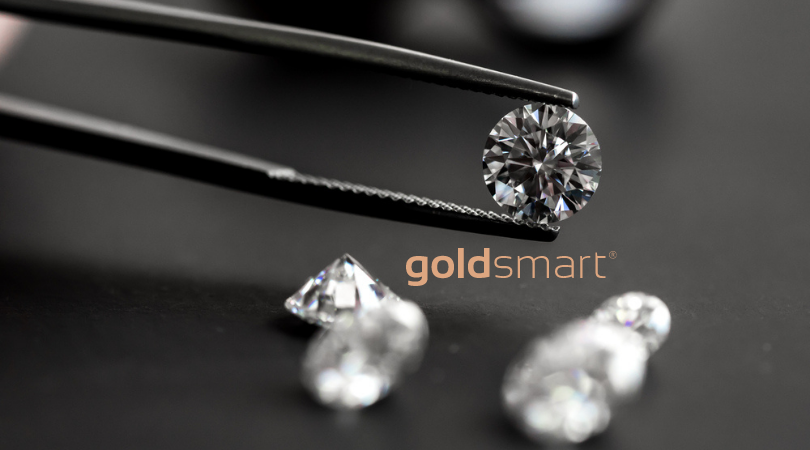
What’s the worst gift someone could give another? A charitable donation in their name really intended for something else? A gift that had to be returned because it was defective or the wrong item? Or a gift that disappears in a few days or weeks after it is given? No, the worst gift by far is one that is given with all the decorations of sincerity and turns out to have been an intentional lie all along. That’s the case with fake diamonds. They represent an image that is “supposed” to be rare, expensive, takes great sacrifice to secure and physically embodies how much someone cares about another. So, when it turns out the diamond given is an artificial fake, it communicates volumes regarding what the giver actually thinks about the recipient.
The giving of a fake diamond without disclosing its condition involves a lot of planning, engagement, action and deception, all of which are on purpose. That is what makes the action so offensive both to the person receiving the gift as well as to others witnessing or hearing about it. If it was simply a small gesture, openly disclosed and known, that would be another matter. It would be no different than giving a gift of costume jewellery. Unfortunately, when deception is involved, allowing someone to think a gift is far more than it is, assumptions and choices in life could hinge on the deception that never would have happened otherwise. Legally, in a business transaction, the same kind of fake gift would be considered fraud in most countries and constitute a crime. So, passing off a fake diamond without telling someone that’s the case is no simple matter, joke or slight.
The above said, fake diamonds still get passed around, and a lot. Anything precious tends to be ripe for duping, and just like fake gold there will always be plenty of fake diamonds as well. The problem is so pervasive, both private diamond buyers as well as professionals have had to institute a whole assortment of tests and detections to make sure people are trying to pull a fast one with supposedly rare stones and jewellery sets. And, as more and more fakes enter the market, they start to appear in the most unexpected places. People are even realizing they have fake diamonds handed down to them from estates and inheritance without anyone really knowing the truth for generations.
Technical Background
Where exactly do fake diamonds come from? Most people will hear the answer along the lines of being created in a lab. That’s partially true, but there’s more to the story. Artificial diamonds are technically referred to as moissanite or synthetic moissanite. The actual name was borrowed from a fellow named Henri Moissan. As a chemist, Moissan was well aware of how inorganic processes created diamonds naturally, producing one of nature’s rarest and hardest substances. While on a trip in Arizona in 1893, the Nobel Prize winner was exploring rocks and strata in a meteor impact site and came across what he thought were diamonds. However, continuing to examine the samples, Moissan eventually concluded they were not the rare gems but instead a form of silicon carbide. That said, even the other form the rocks turned out to be were still rare in Moissan’s day; all samples located were only in meteorite sites well into the middle of the 20th century. It was only then that additional samples were found in mining sites occurring naturally on earth.
In terms of production and wide availability, moissanite today is generally synthetic in nature, meaning it is factory-produced from lab-based chemical reactions. The application of moissanite really started to appear and hit the market big right at the tail end of the 1990s and turn of the century with fake diamonds that looked amazingly real and replicated the real thing accurately. Still made from silicon carbide, these fake diamonds could be produced in all shapes and sizes and with amazing clarity. By 2018 the production patents that kept the production of synthetic moissanite limited had expired, and that meant anyone could produce fake diamonds at will and put them to market for consumer purchase.
The key features that allows moissanite to pass so well as a fake diamond tends to be the very same features that people look for in real diamonds. First, moissanite can be produced with extremely good transparency within the stone. When measured on a refraction scale, the synthetic stone comes extremely close to a diamond (2.65 versus 2.42 for a diamond). Secondly, moissanite has incredible hardness and density, similar to real diamonds. In fact, its hardness exceeds that of cubic zirconia, the other common material used to make fake jewellery stones. Third, moissanite has thermal conductivity properties. They tend to play out very similar to diamonds and can only be differentiated with ultraviolet light showing a bit of greenish or yellow glow or curved inclusions. Real, natural diamonds won’t produce these effects.
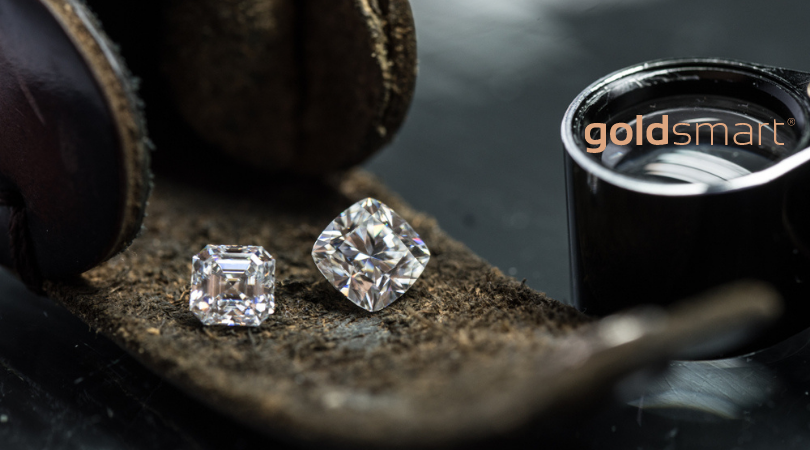
The Best Ways to Test a Diamond for Being Fake
Buying diamonds can range from the singular purchase for a personal relationship interest to collecting gems and stones for personal investment to buying diamonds for resale in business ventures, moving value from one market to the next for profit. Whatever the case, the same issue applies, how does one make sure the diamond being bought is actually real and not a fake? There are lots of ways an amateur or professional can be duped and countless stories of the same. It’s never been enough just to rely on a dealer’s name and paperwork alone, although legally-established businesses have a rarely been the culprits in passing fake diamonds.
First, one has to understand there is far more than just one type of fake diamond. As mentioned above, moissanite and cubic zirconia are two types in a field of multiple alternatives. No one in the business of buying diamonds for any purpose should be doing so blindly. It’s practically a pre-requisite for a person to have spent some time learning about the stones, their features, the qualities of a good diamond, and how to verify their quality.
Second, the tests that exist on the fly pale in comparison to full professional testing methods, but they do provide at least some level of catching low-grade fakes or signaling a question enough that a person should back away and look for an alternative versus what they are considering at the time. Keep in mind, as well, not every test will work be applicable. A lot depends on the condition of the diamond in terms of whether it is already mounted in a stonepiece or loose. Obviously, a loose stone is far easier to work with and test in a variety of ways. The mounting actually creates restrictions and limits one’s ability to verify quality and accuracy, including the ability to cover up physical defects such as cracks or chipping. That said, nothing bars a jeweller from removing the stone from the mounting for additional observation and restriction-free verification.
Can professional diamond buyers be fooled like consumers? The answer is “yes.” Poor-quality fakes are spotted very easily. However, extremely well-done professional fake diamonds can pose a serious challenge for professional diamond buyers, especially with modern technology. Laser tools and fills have become exceptionally good at producing results, making it much harder for experts to spot high-grade fakes. As for consumers, these products would likely pass unnoticed almost all the time, and that should give people a very disturbed feeling in their gut if not for an industry bent on protecting itself and consumers with extensive verification.
Immediate tests
Here are some of the immediate tests one can apply to at least flag potential issues or warnings signs.
Fogging
Natural diamonds have a resistance to condensation. Condensation happens when there is a difference between the temperature of a surface and the surrounding air, causing moisture to coalesce and form droplets. When one breathes on a stone and it stays fogged up for a while, that’s condensation that has built up. Fake diamonds will display this trait. Real diamonds don’t allow for condensation due to the nature of their chemistry and won’t fog up at all.
Water
Using a glass of water, the diamond is dropped inside to watch how fast it sinks. Real diamonds have an incredible amount of density which makes them extremely hard. They sink very fast as well. Any kind of a diamond that actually floats, bobs or slowly drops has far less density and maybe even trapped gasses inside it. That creates buoyancy and is a clear flag something is wrong.
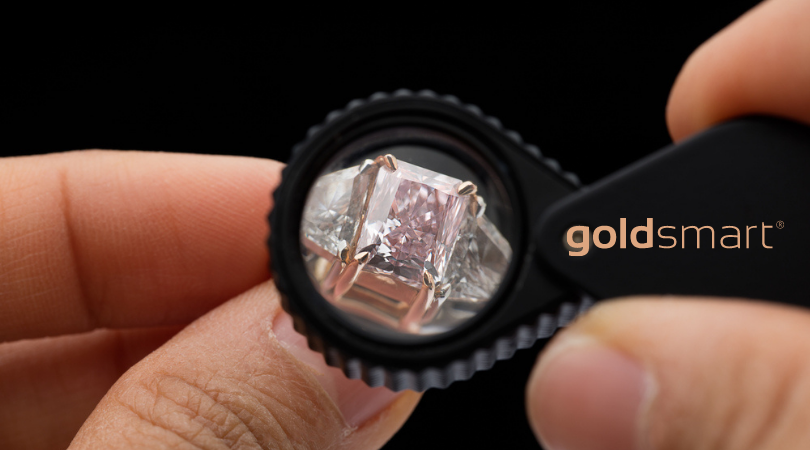
Magnified View
With a magnifying glass or a loupe, the diamond should be examined internally with good light. The target involves imperfections. While the seemingly common sense perspective would be that a good diamond has no imperfections, it’s actually the opposite. A diamond with zero imperfections inside is very likely a fake, synthetic product. One that has slight inclusions is more likely to be the real natural stone.
Using a Black Light
Designed to display a different type of color spectrum, a black light will highlight fluorescence. With a real diamond one can expect to see a good amount of blue hue. With a fake diamond the coloring will be more of a green or yellow tinge instead. That said, there have been plenty of exceptions to both categories, so black light testing is only an indicator, not a serious measurement.
Examine the Mount
When a diamond has been placed in a setting it’s usually matched with a high end metal or similar. With a real diamond of worth one should expect to see a mount of expensive, precious metal used such as white or yellow gold, platinum and similar as well as additional accents with smaller precious stones. If a mount appears with cheaper metal, that tends to be a major giveaway sign.
Hallmarks
Many manufacturers use stamps and hallmarks on their stones and jewellery to identify manufacturing and by whom. Fake stones will frequently have a microscopic stamp on them if produced by a reputable manufacturer. The mount metal used will also have stamped or engravings identifying the quality of the metal in terms of karat and numeric codes for metal identification.
Heating
Most consumers will probably never be able to apply this test because it is destructive in nature. However, real diamonds can be heated without any issue. Fake diamonds, on the other hand, will shatter. The process involves heating up the diamond with flame or hit for about 40 seconds or so and then immediately dropping it into a container of cold water. The physics of rapid cooling causes contraction which happens too fast for inferior materials, and they break or warp. Diamonds being much harder and dense, don’t have this issue.
The Refraction Test
Real diamonds have a unique ability to sparkle and bend light in a unique way that makes them look like they are emitting sparks. What’s happening involves regular light entering the crystal, being bent in a different direction and changing color spectrum in the process. Fake diamonds have a very poor ability to refract and generally don’t have any sparkle or brilliance. This refraction element can be confirmed a couple of ways. Put the diamond on a newspaper. If you can read the print through the diamond, it’s a fake because refraction would have made it hard to read anything. Alternatively, a clear dot on a piece of paper works well too. With the pointed end of the diamond on the dot, you should not be able to see it looking through the diamond. If you do see the dot, the diamond again is likely a fake.
The Sparkle Test
This approach is another version of testing refraction, but it works better for stones that are already mounted. With the diamond held to a lamp bump, one should see light bouncing off the stone with color accents. These will often appear on the walls or ceiling above. Fake diamonds don’t reflect light very well at all and won’t give off much of a light show on nearby surfaces.
The Diamond Tester Tool
Using a thermal conductivity probe, a user can measure how well a diamond disperses heat. Diamonds have amazing ability to pass heat through themselves. This dispersion measures poorly with fake diamonds except moissanite stones. The moissanite test actually performs as well as a real diamond, which is why they have become the go-to stone for high quality fakes that are hard to detect.
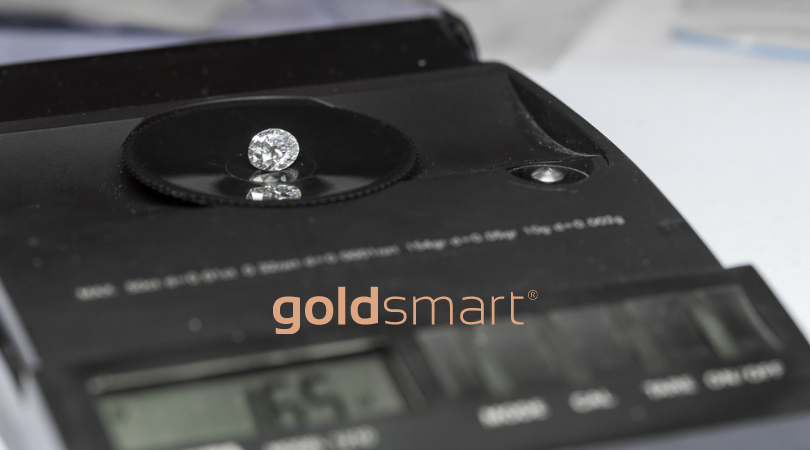
Weight
Real diamonds have far greater density than other stone types, real or fake. That makes them heavier. If measuring two stones that are supposed to be the same karat, cut and shape, the real diamond will weigh more. These weights can be tracked and referenced for exact amounts, which makes them easier to identify versus fakes of the same size that show with a different weight.
Electrical Conductivity
Like heat dissipation, real diamonds also pass electricity through themselves very well. This is a distinction that sets them apart for synthetic moissanite, which cannot pass a charge so easily. No surprise, diamond electricity testers have been developed to apply this test accurately on hand.
X-ray Testing
If you’re lucking enough to have the equipment on hand (which most people are not), x-ray testing will identify the molecular structure of a stone, which can then be compared with what is expected for a real diamond versus a fake.
The Old Scratch Test
The myth was that if one takes a diamond and applies it with pressure across glass, it will leave a notable scratch because of the diamond’s hardness. However, modern fake diamonds can be constructed with very extensive hardness, even if not dense, and they too can fake the mirror or glass scratch test. So, this method of verification has basically dropped off because it can be circumvented easily.
Giveaway Traits of Particular Fake Diamond Types
Each stone composition has unique traits about it, including fake ones. And those chemical elements also give off specific signs that are unique to that composition and unlike other forms, whether natural or man-made.
For Cubic Zirconia diamonds, both the lack of sparkle as well as poor performance in a heat test tend to be quick giveaways on the fake qualities of this stone. In additional, zirconia diamonds give off an orange hue when put to light, and they frequently examine with full clarity and no imperfections at all internally.
With white sapphires (yes, there are actually clear ones), one is dealing with a natural stone being passed as a diamond. The internal nature of the stone, however, tends to be blurry without an distinction. They also don’t sparkle and don’t have a clear delineation between light and shade areas in the stone.
Moissanite diamonds are the high end of the fake spectrum, as mentioned earlier, and very hard to detect. These stones, however, can’t pass an electricity charge test, which is the Achilles Heel and giveaway.
White Topaz is another of the natural stones that can be passed as a diamond to an unwary buyer. That said, these fakes don’t have the density or hardness of a real diamond. As a result, they will show off scratches on their surface that will never exist on a real diamond. But one needs to use a microscope or loupe to see these differences.
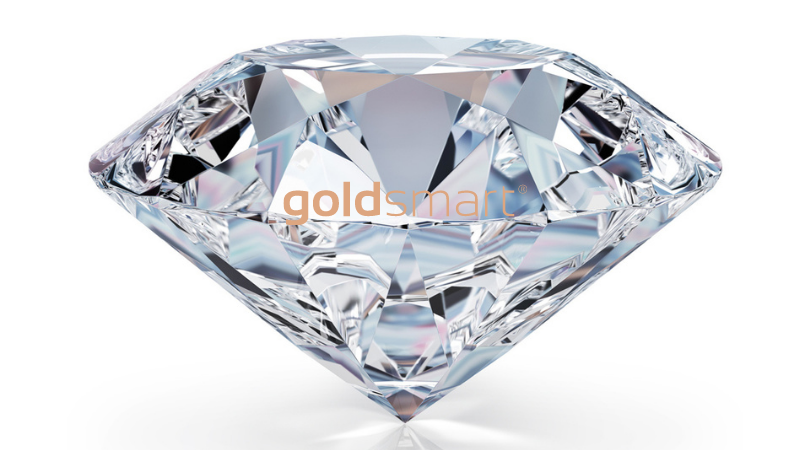
What Should a Consumer Expect
Given what’s been covered in this article so far, it should be pretty apparent that while a consumer can easily block off some of the low-grade fake diamonds on the market, high quality stones without the natural diamond qualities will be very hard to spot. As a result, anyone who is going to be receiving or paying for a very expensive diamond would be well-served to seek out a professional expert’s help in verifying the authenticity of the stone in question as well as its grade and quality. The capability that exists today in fabricating synthetic moissanite stones is generally beyond what most can detect with the naked eye and basic tools. That, of course, makes it extremely hard for a consumer to know what they have on hand without additional help.
The traditional tests for fake stones are not without merit, however. They are extremely useful in catching lower quality stones being passed as diamonds or at least flagging behavioral features that should give a person pause before signing on the dotted line for a purchase.
The other approach a consumer can use involves working through a certified, licensed, and reputable diamond seller that has been established and with a long track record of authenticity and service to their community. Diamond sellers and buyers who have commercial dealerships cannot afford to be taking chances with disreputable practices; it would literally put them out of business as word got out about passing a potential fake. Not to mention, there would be criminal ramifications as well. As a result, reputable diamond dealers have a well-understood path and role in both providing high quality stone, procuring the same from private and public sources with extensive testing, and protecting the community from the trafficking of fake diamonds and similar.
If you have unwanted jewellery with diamonds that have reached their point in your life that you want to convert into something else via liquidating their value, give us a call or email and we can set up an appointment at GoldSmart to evaluate your collection. Again, there is no obligation to sell, and we gladly provide our evaluation with educational benefits so consumers have a far better idea where they stand with their jewellery.
Being Gold Buyers we are often surprised with the horrendous mark-ups that our customers have paid for Jewellery from well-known retail stores. It’s not uncommon to hear stories of gold jewellery that was purchased at a 500% mark-up over and above the actual gold value. When you buy something from a retail jewellery store you are paying for manufacturing, shipping, handling, packaging, and the retail store overheads including salespeople. Each time someone has “touched” the item from manufacturing to the time it’s in your hands.
Gold jewellery markups are significant – simply put, jewellery is not an investment! Don’t let anyone convince you otherwise. If you buy something for it’s beauty then expect that it’s real value may be a lot less than what you paid. Another word of caution – don’t bother trying to sell gold back to the jeweller because our customers say they either simply won’t buy any gold back from you or they will offer low rates.
This week we’ve also had a lot of people comment to us they would be uncomfortable to sell gold in front of other people, especially in public locations such as shopping malls. Gold Smart customers are discerning when selling gold and we offer a professional and personal service that pays you more.
If you are embarrassed to go into a shopping mall or dodgy pawn shop then talk with the professional gold buyers – Gold Smart today!
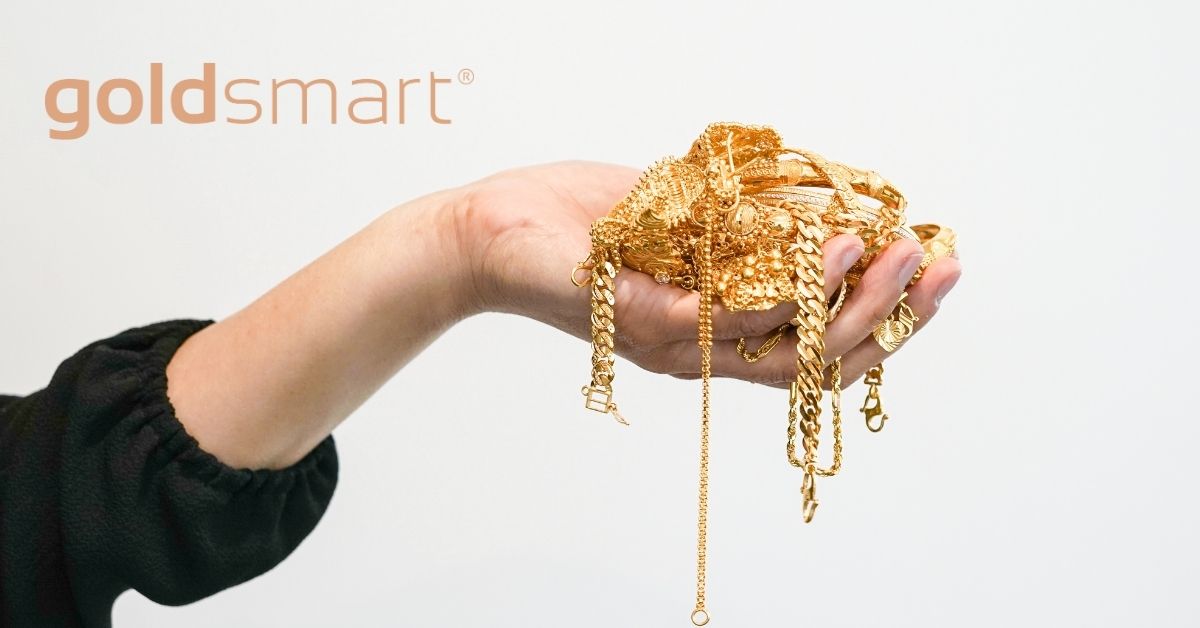
With the price of gold remaining well in the upper ranges, even in 2021, anybody who has some spare gold sitting around not doing anything for them is in a good position to sell it for a sizable amount of cash. Most folks think that viable gold should be in the form of coins, medals, or fine jewellery. However, believe it or not, junk gold can sell just as well. Known as scrap, broken gold, leftovers, spares, or similar, anything that is made of solid gold can still be sold for resale value and secondhand gold pricing. You won’t be paid exactly the same price as the spot value seen on TV when watching the business channel, but even 10-carat gold is worth a few hundred dollars today, depending on the size and weight.
What Counts as Scrap Gold?
Scrap gold can include just about any broken or leftover part of jewellery, even damaged items, as long as the part is made of solid gold. Gold-plated items will not be considered as they are simply not gold at all. Instead, these items are made with a base metal and a very thin sheen of gold attached to the base metal using a chemical reaction or electrostatically. However, where the item is sold gold, even if broken, crack, missing parts, or the single piece leftover of a pair, the gold will sell as part of the gold consolidation process that put the precious metal back into circulation when melted together with other gold. Scrap gold is a big business; even microbes are being used to pull out gold from garbage and e-waste.
How Does Scrap Gold Sell?
There are two main channels that scrap gold goes through. The first, which is far more common, is a basic gold buyer. This type of business (or individual) buys anything that has solid gold from 10-carat to 24-carat quality. Because these businesses don’t have any tools or facilities by which to smelt gold bought, they have to resell it to a consolidator. That means they are only making a profit on the margin between what they buy the scrap gold for and what they sell it at in terms of price point. No surprise, basic gold buyers try to lower the price they pay as much as possible to gain a profit versus what they sell it for to a consolidator. Consolidators buy large amounts of gold to melt all at once, so they are not keen on buying from a singular gold buyer who tries to charge a high price; they just go to someone else. So basic gold buyers are pressured to gain their profits from personal sellers versus working the market hard when they sell in turn.
The consolidator is a gold buyer who, as mentioned above, buys large lots to smelt them together. Consolidators have the equipment and means to melt and reform gold into bullion bars, which they then sell in bulk to the industry as well as investors seeking large amounts of gold for value. The consolidator typically works as a business-to-business buyer, rarely taking gold from individuals unless it is a large lot. However, there are industry players who are both gold buyers and consolidators in one. These businesses cut out the two-layer approach, which allows them to give better pricing to personal sellers and consumers looking to cash out their broken and scrap gold.
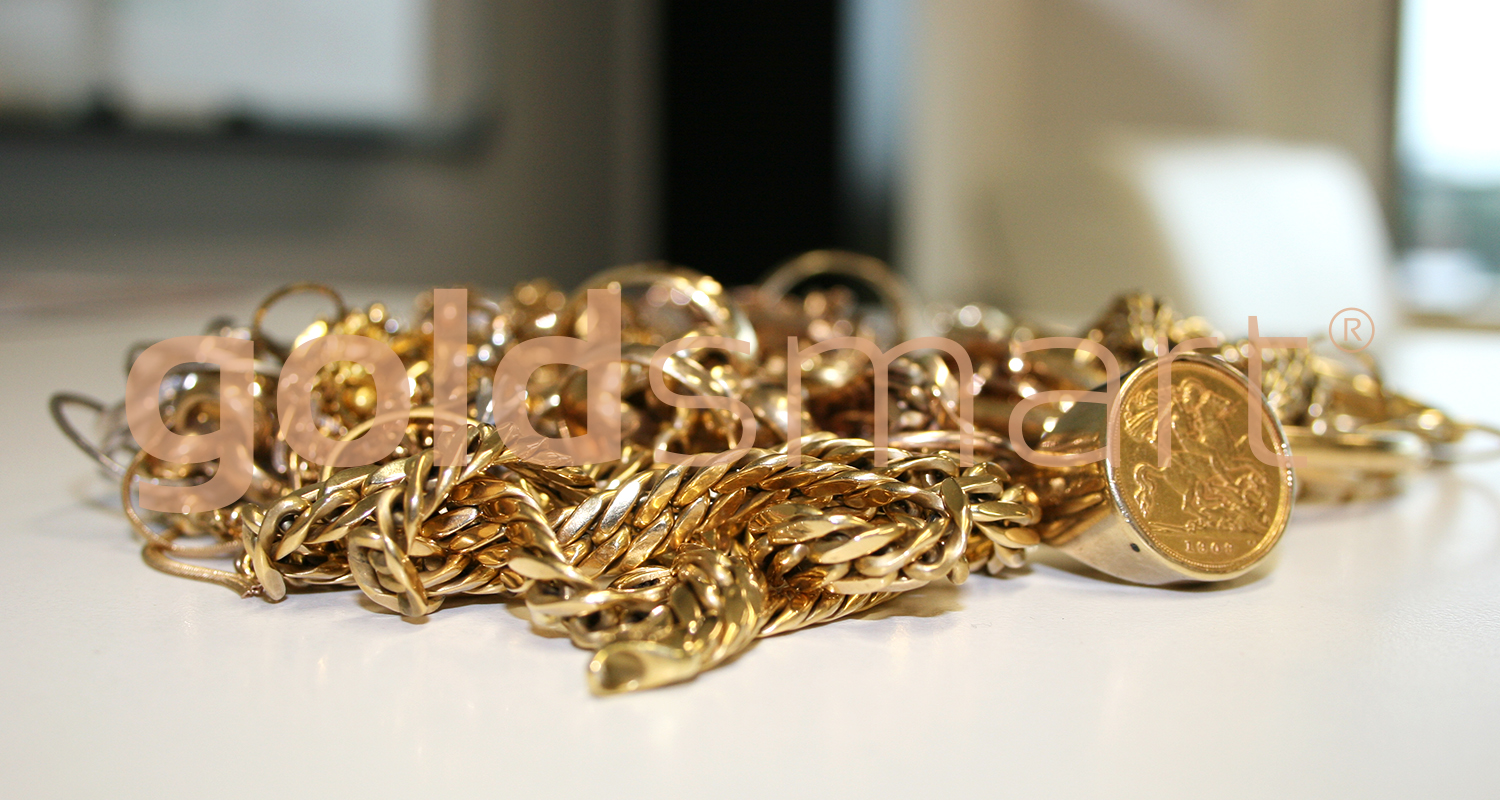
Taxation Generally Does Not Apply
Normally, for taxes to apply to your gold-selling in New Zealand, you have to be operating as a business or with the intent to sell the gold again. This isn’t the same as in other countries, but the New Zealand tax code recognizes that the private individual has an occasional need to sell personal property and gold from time to time. It is where someone is regularly buying and then reselling gold to make a consistent and repeat profit that business or franchise taxes would kick in and apply. So, in practice, a one-off sale of scrap gold originally bought for personal use or a gift is not going to qualify. However, folks need to be careful here; repeatedly selling scrap gold every few months is going to start to look like a for-profit, business venture, and that can definitely catch the eye of tax collectors. With today’s computers, bank record scanning and reporting required, it’s very hard to avoid scrutiny when the taxes do apply, so don’t risk it. If you’re going to be making money finding and selling scrap gold regularly, accept that taxes will be part of your operating cost then.
You’re Also Helping the Environment Selling Scrap Gold
The environmental benefits of recycling gold have a secondary plus for everyone too. When you sell scrap and unwanted gold in New Zealand it is far more efficient than mining new gold from the ground. A gold mining operation typically requires large amounts of energy and highly toxic chemicals (including cyanide, lead, and sulfuric acid). It can take around 1 ton of grade ore to extract as little as 5 grams of fine gold, a considerable effort with permanent impacts to the earth and surrounding land.
A Prime New Zealand Broken Gold Buyer
The condition of worn, broken, or damaged gold doesn’t matter when selling your scrap items to Gold Smart because we are basically recycling gold. Because Gold Smart works on both levels of a buyer and consolidator, we are able to price gold for resale competitively, and usually, our price offers are some of the best available for personal sellers in New Zealand. So, if you are wondering what that old gold jewellery in your drawer is worth, the price of resale gold in general, comparative gold coin values on the market, or you simply want to learn more about how simple it is to create significant amounts of new cash with scrap gold sales, then call the friendly and professional gold buyers at Gold Smart today! After your first sale with us, you’re probably going to be asking yourself why you didn’t start sooner.
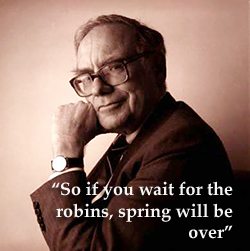 Unless you live in a cave you’ll have heard about the record high gold prices per ounce – at the time of writing the price of gold is around US$1212 per ounce!
Unless you live in a cave you’ll have heard about the record high gold prices per ounce – at the time of writing the price of gold is around US$1212 per ounce!
The prices of gold have doubled in recent years meaning the old gold jewellery that you no longer need or wear can be converted into cash. When selling gold you should keep in mind exchange rates as we buy gold in New Zealand dollars – this can create times when gold prices per gram are very high however a strong New Zealand dollar can cancel out gains made in the spot prices.
Gold price movements are impossible to predict and are affected by many variables including currency strength, stock markets, interest rates, inflation or deflation, sentiment and so on. It’s possible to bet on price movements through Options and Futures however these are considered quite risky and only for sophisticated investors.
Warren Buffett in a 1998 presentation at Harvard said of Gold, “It gets dug out of the ground in Africa, or someplace. Then we melt it down, dig another hole, bury it again and pay people to stand around guarding it. It has no utility. Anyone watching from Mars would be scratching their head.”
Another more recent and famous commentary made by Warren Buffett came in an article he wrote for the Wall Street Journal in October 2008…
“A simple rule dictates my buying: Be fearful when others are greedy, and be greedy when others are fearful. And most certainly, fear is now widespread, gripping even seasoned investors. To be sure, investors are right to be wary of highly leveraged entities or businesses in weak competitive positions. But fears regarding the long-term prosperity of the nation’s many sound companies make no sense. These businesses will indeed suffer earnings hiccups, as they always have. But most major companies will be setting new profit records 5, 10 and 20 years from now.”
“Let me be clear on one point: I can’t predict the short-term movements of the stock market. I haven’t the faintest idea as to whether stocks will be higher or lower a month — or a year — from now. What is likely, however, is that the market will move higher, perhaps substantially so, well before either sentiment or the economy turns up. So if you wait for the robins, spring will be over.”
So what’s holding you from turning that old gold into good cash to invest in things you need?
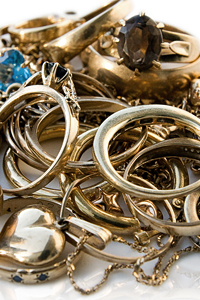 Are you ready to turn carats into cash? The team at Gold Smart are buying gold in large quantities and for the highest prices in years. Worn, damaged and out-of-style gold jewellery represents a great way to create cash when you need it.
Are you ready to turn carats into cash? The team at Gold Smart are buying gold in large quantities and for the highest prices in years. Worn, damaged and out-of-style gold jewellery represents a great way to create cash when you need it.
A lot of people ask us how do I sell gold and used jewellery for cash? The process is quite simple and the price you receive will depend on three things: #1 what you are selling, (9ct gold or 18ct gold, gold bullion or gold coins, etc), #2 how much you have to sell (grams, ounces, kilos) and the #3 current market prices.
Carat (or Karat) is a unit of measurement to measure the purity of gold alloys. It’s represented by the symbol ct or kt. Carat can also be used to describe the mass or weight of gemstones. Carat means the proportion by weight of one part in twenty four. Examples of indicative gold content are as follows:
- 9ct = 37.5% gold (or 375 millesimal fineness)
- 14ct = 58.5% gold (585)
- 18 ct = 75% gold (750)
- 22ct = 91.6% gold (916)
- 24ct = 99.99% gold (999 or pure/fine gold)
As a general rule the higher the carat value, the higher the gold content, and the higher the cash value from Gold Smart. The team at Gold Smart are experts in determining the actual carat of any gold item.
Bullion and Gold Bars
The term “Bullion” describes a mass of precious metal typically in the form of gold/silver bars or ingots. Bullion is traded on its precious metal value because of the high purity content and the most common forms of gold bullion are recognised internationally – making it an efficient mode of trade. Gold Smart pays high prices for bullion – gold prices can fluctuate, so call today to and lock-in favourable prices.
Examples of ‘Good Delivery’ Gold Bullion Coins inclue:
- US Gold Eagle – embossed with the image of a bald eagle (91.67% pure)
- Canadian Maple Leaf – embossed with the symbol of Canada (99.99% pure)
- Chinese Panda – depicting a panda bear which changes each year
- South African Krugerrand – the first bullion coins ever released by a Nation (91.6% pure)
- Australian Gold Kangaroo Nugget – (99.99% pure)
- Gold Sovereigns – Full or Half (91.6% pure)
Others include:
- New Zealand Gold Kiwi (99.99% pure)
- ABT Gold Ingot (99.9% pure)
- CMIT Gold Bar (99.9% pure)
- AGR Matthey Gold Ingot (99.9% pure)
- Morris and Watson Gold Ingot (99.99% pure)
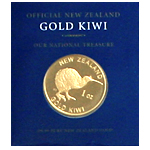 When selling your gold you will need to make sure you don’t get ripped-off by the many “Sharks” out there. To get excellent prices for your gold you will need to talk with the trusted gold buying experts – Gold Smart!
When selling your gold you will need to make sure you don’t get ripped-off by the many “Sharks” out there. To get excellent prices for your gold you will need to talk with the trusted gold buying experts – Gold Smart!
Gold Smart (New Zealand’s leading gold buyers) are happy to announce our new TV commercial coming to a screen near you!
Anita from Gold Smart says, “Gold Smart offers the most competitive and professional service for people wanting to sell their worn and out-of-style gold for cash. Being open and transparent we are creating a new standard for New Zealanders wanting the best price and a personal service. The results speak for themselves and our testimonials give clear indication to the many happy customers that sell gold to Gold Smart.”
At Gold Smart you can sell your worn, damaged and out-of-style gold for cash today to enjoy what you want tomorrow. For a personal service that pays you more, call 0800 Gold Smart.
If you want to cash-in on the record high gold prices to sell gold, talk with the friendly team at Gold Smart – New Zealand’s Gold Buyers. Selling gold has never been easier so make the most of your gold jewellery and turn it into something you can enjoy.
Every New Zealander needs to know about the new and professional service from Gold Smart so please forward this message onto all your friends and family!
 Yes, it is indeed that time of year again. With weeks to go to Christmas now’s the time to free up some extra spending money by cleaning out the unworn jewellery in the drawer gathering dust.
Yes, it is indeed that time of year again. With weeks to go to Christmas now’s the time to free up some extra spending money by cleaning out the unworn jewellery in the drawer gathering dust.
Here are some excellent ideas from Gold Smart customers putting their cash to great use:
- Attending a relatives wedding
- Treating the family to a big screen TV for Christmas
- Having a weekend away with spouse to celebrate a wedding anniversary
- Money for an upcoming wedding
- Raising funds for music lessons
And many more…
Christmas is an excellent time to reflect on what we are grateful for. We hope the lead up to Christmas is fun for you!
At Gold Smart we’ve had a lot of people calling wanting to know what their gold bullion and gold coins are worth. Naturally we prefer to deal with serious sellers that are wanting to move on their earlier purchases. It’s great news that gold prices have been at record highs and continue to remain strong – however only looking at the gold price does not take into account the gold exchange rate between the NZ dollar and the US dollar. In real terms this means if you’d invested in bullion over the last year you would have lost because the US dollar has significantly weakened against the NZD. This trend looks set to continue as the USD loses favour as a global reserve currency.
An example:
If you’d “invested” NZD$5,000 into bullion in February this year, it would be now worth NZD$4,114 (a loss of $886).

USD/NZD Exchange Rates
Any gains in the gold price have not kept pace with the NZD/USD exchange rates.
If you have gold bullion, gold coins or any other gold items – we recommend selling as the spot prices are losing steam and USD dollar weakens further. The team at Gold Smart are experts in appraising the value of gold bullion – call us today.
